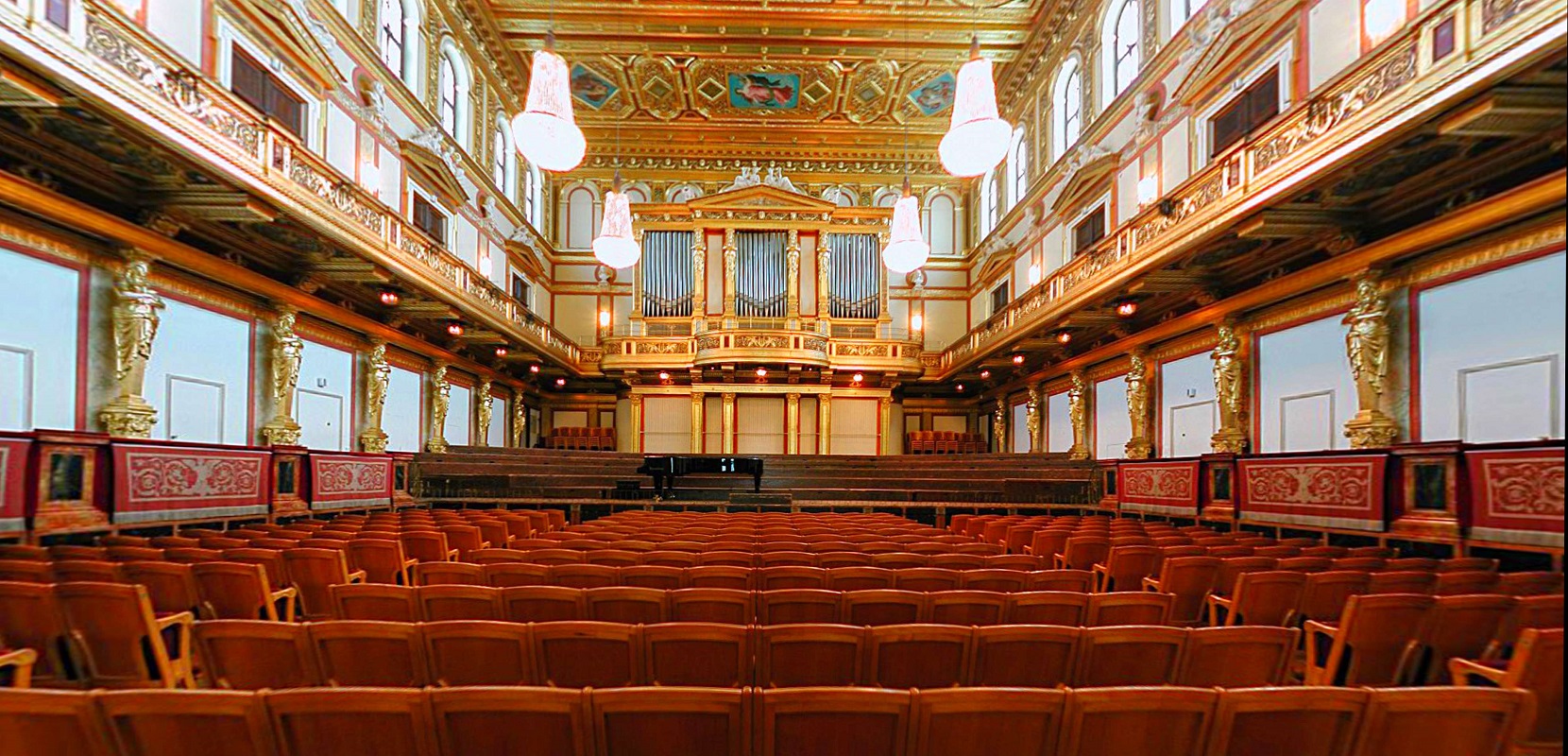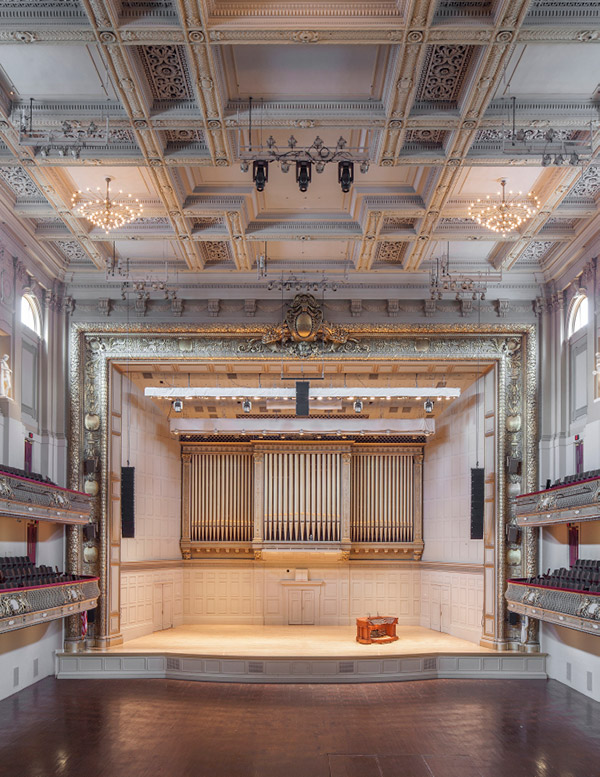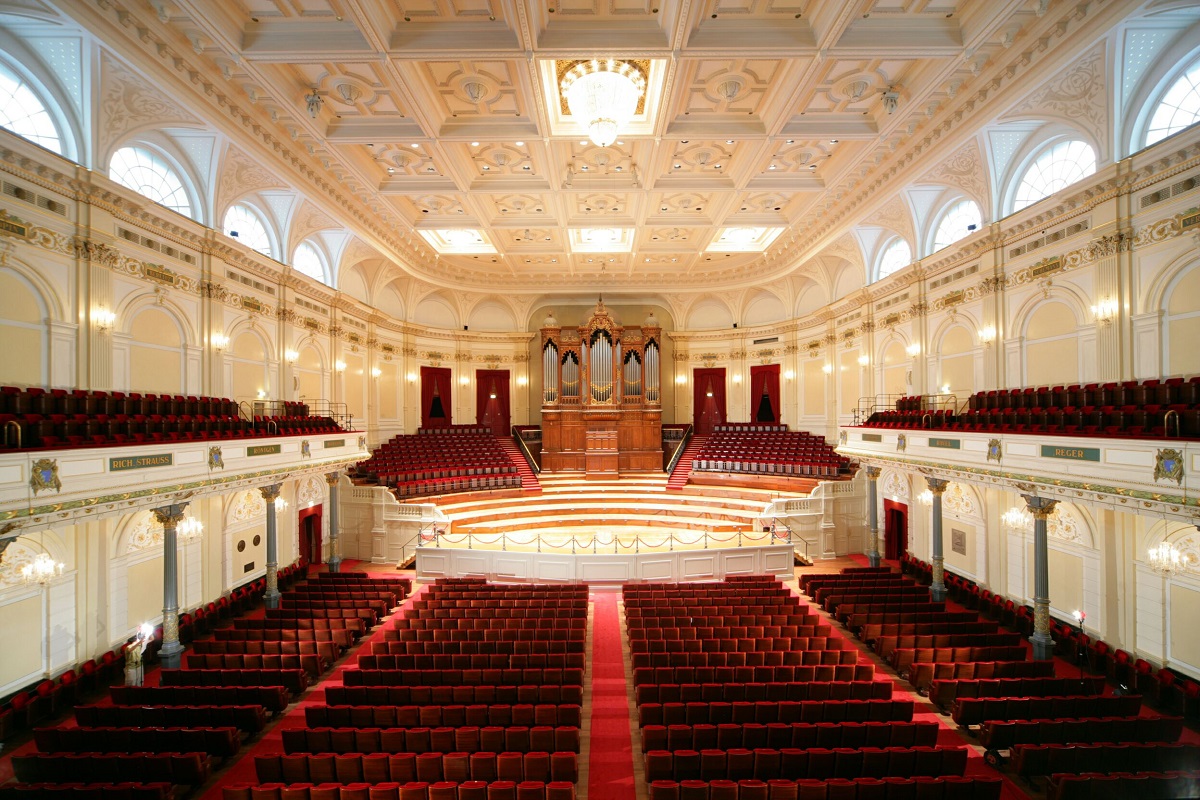BEAUTY of music | acoustics
What are acoustics, and how do they affect the way we hear music? What is a “dry” room as opposed to a “live” room? How can a hall change its acoustics? How do acoustics affect the way a musician plays? Read on as APA Artistic Administrator Milner Fuller provides a primer on the topic.

As a concert-goer, you may hear the word “acoustics” passed around by other listeners. Some will inevitably know what they are talking about, and others may not. By the end of this blog post, I hope you find yourself in the former category. First a definition: the word acoustics refers to the properties and qualities of a room or building that determine how sound is transmitted in it.
Reflection, Absorption and Transmission
A room’s acoustic environment is affected by several factors including its size and shape as well as the materials of the surfaces in the room. Sound waves are reflected, absorbed, or transmitted through various materials. Reflected sound waves stay in the room where they can be heard shortly after the initial sound. Absorbed sound waves will actually become heat. Sound waves that are transmitted through the surface go on to bother your next-door neighbor. Hard, flat materials like wood and smooth stone reflect a majority of the sound waves that contact them. Fabrics and textured surfaces like carpet, drapes and upholstery absorb sound. So do human bodies.
Superb Reverb
Anyone who has had the good fortune of moving furniture in and out of a room has noticed the difference in how the room sounds before and after. Let’s say that we are going to have a party, and to do so, we send all the furniture off to be cleaned, lest we be judged by our guests for living in filth. When the furniture is removed from the room, we notice what sounds like a continuous but quickly-decaying echo. This is called reverberation, which can drastically affect the way we experience sound in that room. This reverb is created by sound waves first making contact with various surfaces in the room, and then reaching our ears. Since all surfaces absorb some sound, these secondary waves, or reflections, are not as loud as the initial direct sound. The last sounds we hear will have hit many surfaces before quietly reaching our ears. Rooms with lots of reverberation, such as our empty living room with hardwood floors, are described as “live.”
Who Curbed the Reverb?
As we add more furniture back to the living room and fight over the ideal location for the chaise lounge, we notice less and less reverberation. Our freshly cleaned furniture, rugs and drapes each absorb sound. What little audible reverberation still exists when all the furniture returns is nearly eliminated when our sound-absorbing guests arrive. The same room that was just described as “live” is now considered “dry” because of the shortened reverb time. This same concept allows concert halls to adjust acoustics by introducing sound absorbing materials to the performance space.
Reverberation time is the amount of time we perceive sound reflections after the direct sound from the source and can be measured. Different reverberation times are preferred for different situations. Classical music is said to be best enjoyed with a reverberation time of 1.75-2.25 seconds. This time is long enough to sound warm and rounded but short enough to remain clear. Since old, large, stone churches can have reverb time as long as 13 seconds (!), composers account for this when writing for organ and choir in that environment. Theaters for spoken plays typical have reverberation times under one second to keep the speech clear, as do venues that regularly produce amplified pop and rock music.

Now Now Now Batting Batting Batting…
The amount of time it takes for the first reflections to reach a listener also can dramatically change an acoustic environment, and this is mostly due to the amount of space between surfaces. Think of the crack of a baseball bat in a large stadium. One hears an echo because there is a large space between the direct sound and the following reflections. Echo is undesirable for any kind of music.
The Shoebox: It’s Not Just For Letters From Your Ex
The ideal acoustic shape for a concert hall was discovered rather by accident as a result of the building technology available in the mid-to-late 19th century. Like with medieval cathedrals, a building’s side walls could not be too wide or the structure would collapse under the weight of the materials. The resulting rectangular, high-ceilinged, narrow-width shape is often called a “shoebox.” It is acoustically ideal because the initial sound and the first reflections off the two side walls and ceiling hit the listener in a way that makes it sound more spatial, like the sound is coming from an area larger than just the width of the musicians on stage. Reverberation time in these halls is also ideal for classical orchestral music.
As acoustic science advanced in the 20th century, may other shapes and configuration were attempted, but few proved as effective as the “accidentally ideal” shoebox. Three halls from this period still counted among the finest concert halls today are the Royal Concertgebouw in Amsterdam, the Musikverein in Vienna and Symphony Hall in Boston. Closer to APA headquarters, the Palladium at the Center for Performing Arts in Carmel, Indiana also incorporates this shape.

Adaptation
The acoustics of a space not only affect the way we hear music but also how an artist performs. Choir directors and opera conductors constantly ask for “MORE DICTION!!!!” When the ensemble moves from a dry rehearsal studio to a live concert hall, reverberation can make the text more difficult to understand. The text that sounded detached and ridiculous in the rehearsal space now sounds fluid and connected in the hall.
Pianists must also be sensitive to the acoustics of a room. A room with long reverberation time will require less peddling by the pianist. The reverb of the room can also hide some of a pianist’s aural blemishes (gasp!). For this reason, some venues are more forgiving than others. Volume and brightness (the relative audibility of higher frequencies) also are important for an artist to consider, as a bright, loud room can make louder passages sound harsh and shrill rather than big and beautiful.
So imagine you are a professional pianist. You have just been flown across the country to play a recital, and you have three hours to acquaint yourself to an unfamiliar instrument and environment. By the end of your practice sessions, you have mastered the environment and are ready to rock! You go back stage, eat a banana, and when you return to the stage an hour later for your recital, you are in a completely different room! Four hundred sound suckers (remember how the party guests reduced the reverberation time in our living room?) have paid to hear you play, and now you must adjust to this new environment on the fly!
Such is the life of an artist…
BEAUTY of music is a monthly series that celebrates and explores many facets of music. Last month's feature covered chamber music, an engaging element of the upcoming American Pianists Awards. What topics would you like included in this series? Please share your ideas in the comments section or reach out on social media!
Photo credits: Amsterdam Municipal Department for the Preservation and Restoration of Historic Buildings and Sites (bMA), Wikimedia Commons, Clemens PFEIFFER, A-1190 Wien